Kindbox * Kind Cafe
At a glance
A meal program designed to help a local cafe teach customers how to dine out sustainably
Context
13-week student project for a course on
design methods and interaction design
My role
User researcher
Copywriter
Videographer
Team
Zoe Yuan
David Gu
June Shi
Rachel Bae
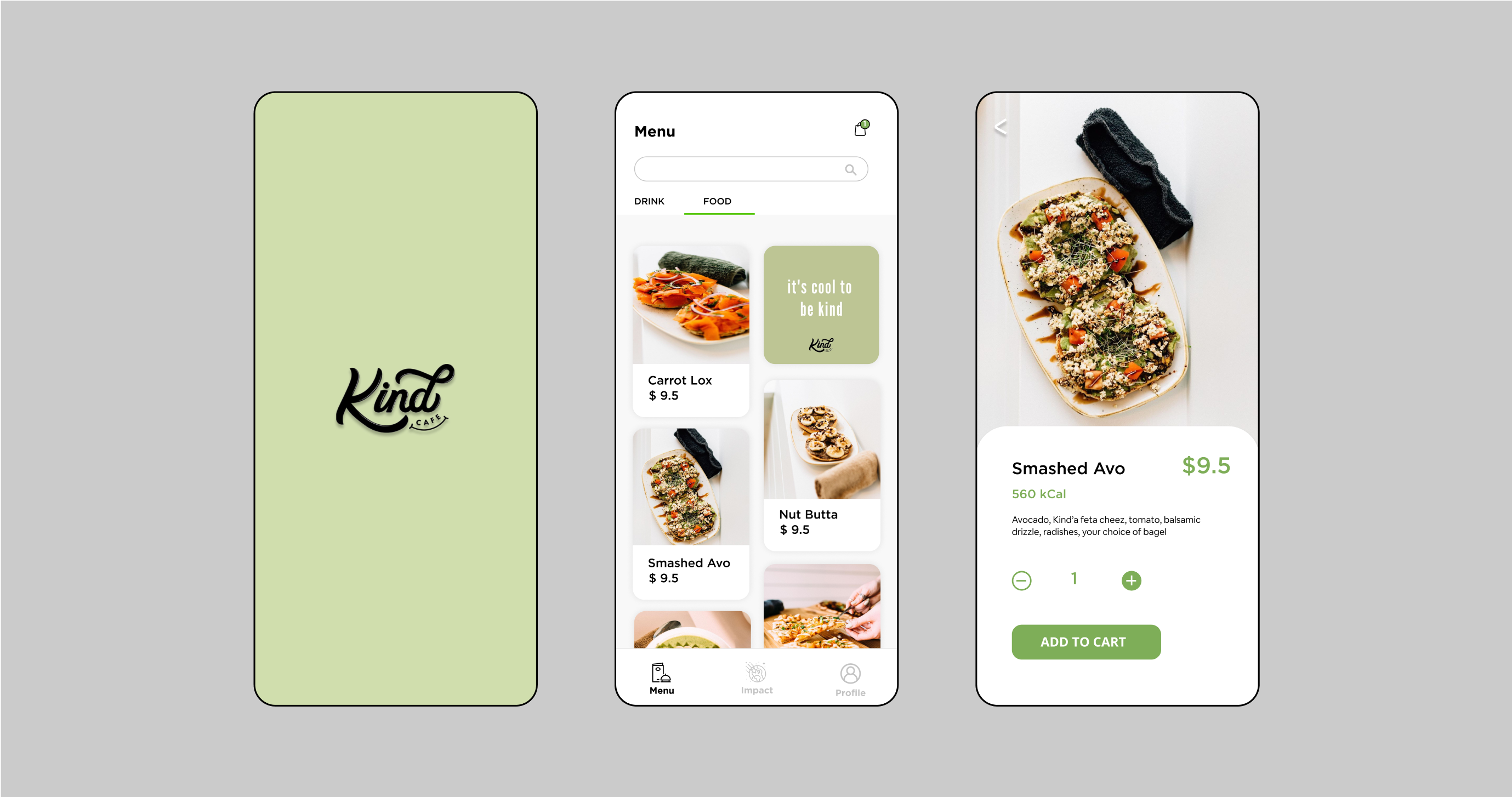
Background
Kind Cafe is a vegan, zero-waste eatery that is focused on creating a kinder restaurant experience. They accomplish this by serving plant-based food, using sustainable resources, and supporting local suppliers to inspire people to take a sustainable approach to eating and drinking. The cafe avoids single-use products and materials in order to practice zero-waste, instead, providing customers with reusable glassware, cutlery and towels, and compost bins for excess food.
The domain
Working with a zero-waste establishment required us as a team to really understanding the principles and practices involved. A simple definition of zero-waste is the conservation of all resources in order to prevent items from entering landfills. A more comprehensive definition can be found here. Bea Johnson, a pioneer of the zero-waste lifestyle, outlines the first three of the zero-waste principles as:
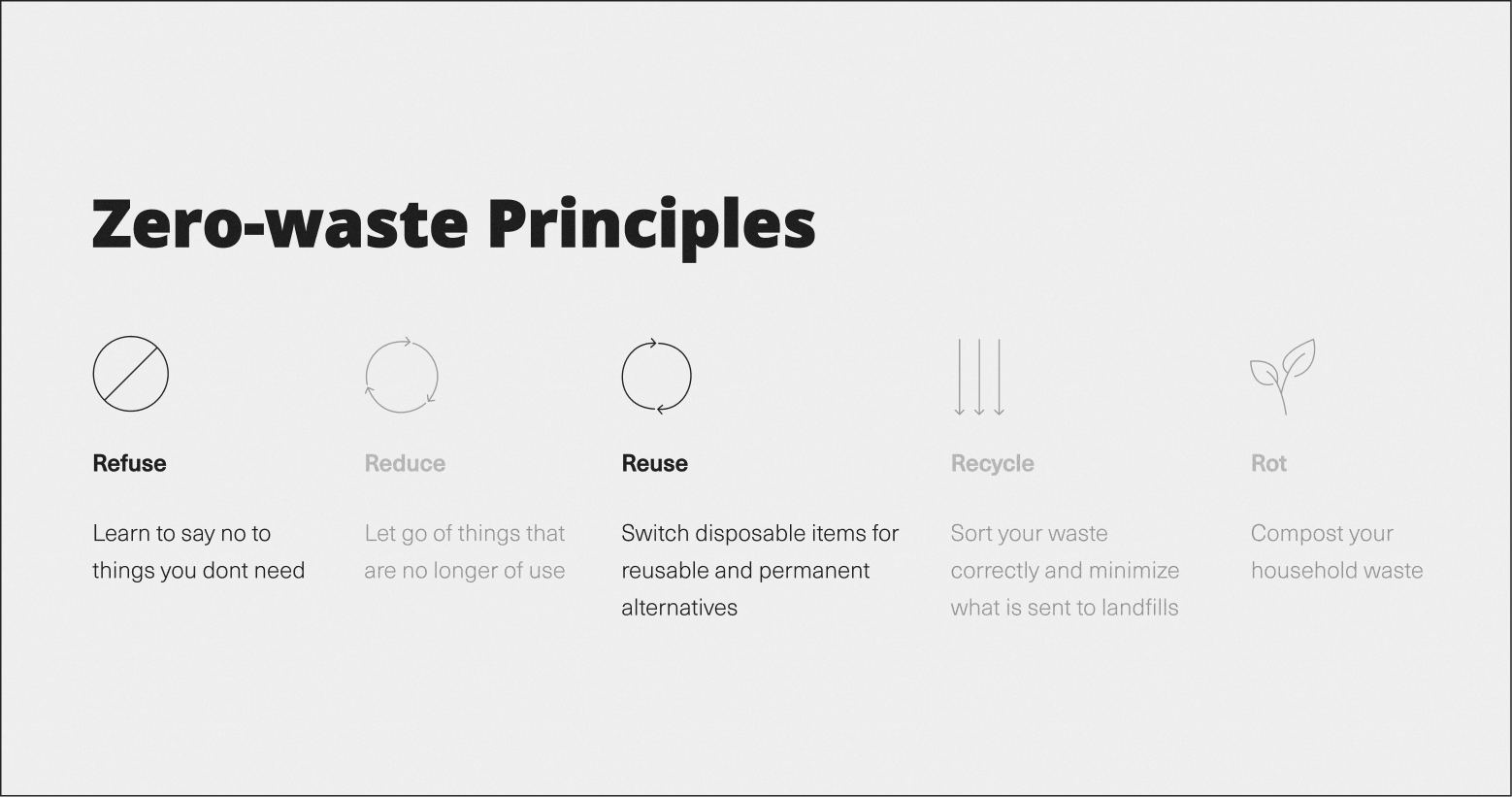
Two of these principles we understood Kind Cafe to embody through its policies, were Refusing and Reusing. The cafe 'refuses' to provide customers with disposable items like utensils, containers, and paper napkins, and discourages customers from having them (evident in the lack of garbage bins). On the other hand, they do put effort into encouraging customers to bring or purchase reusable take-out materials (not just for use in the cafe, but with other local eateries as a partner in Vancouver's Mugshare program).
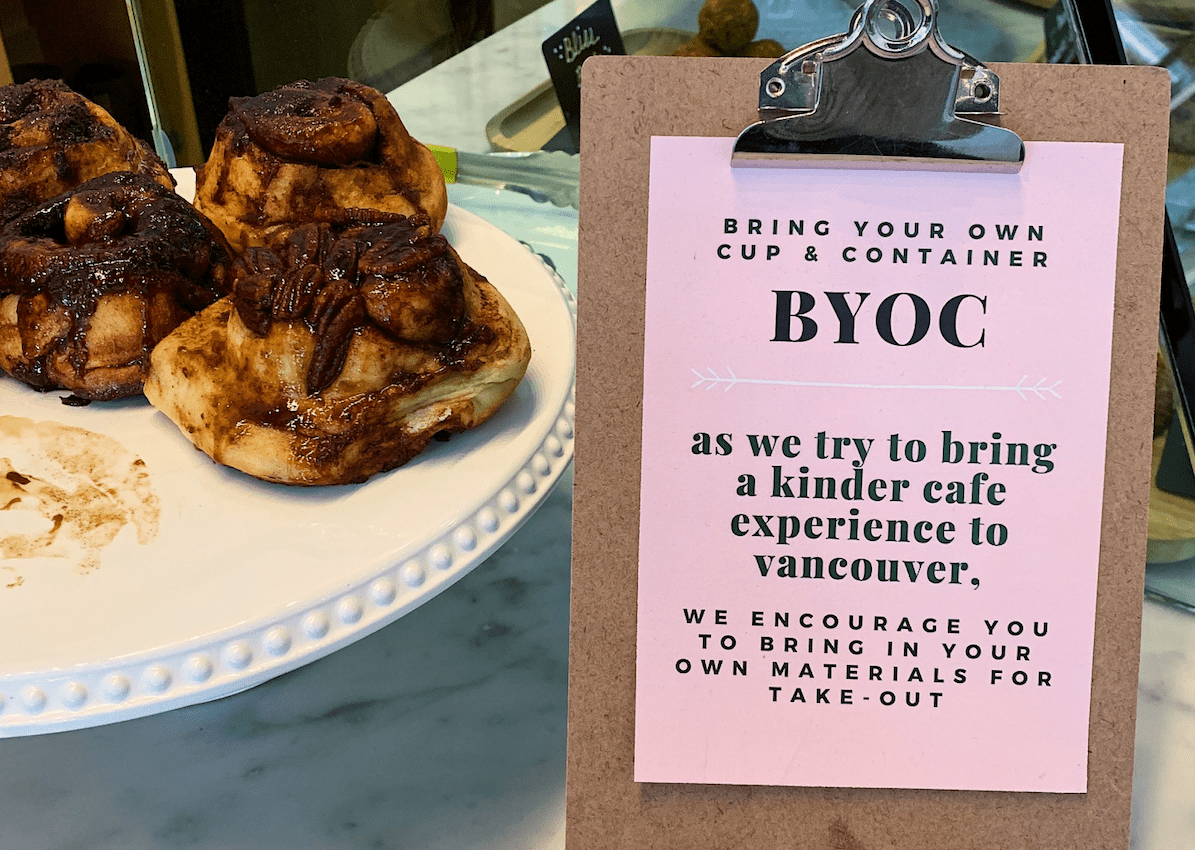
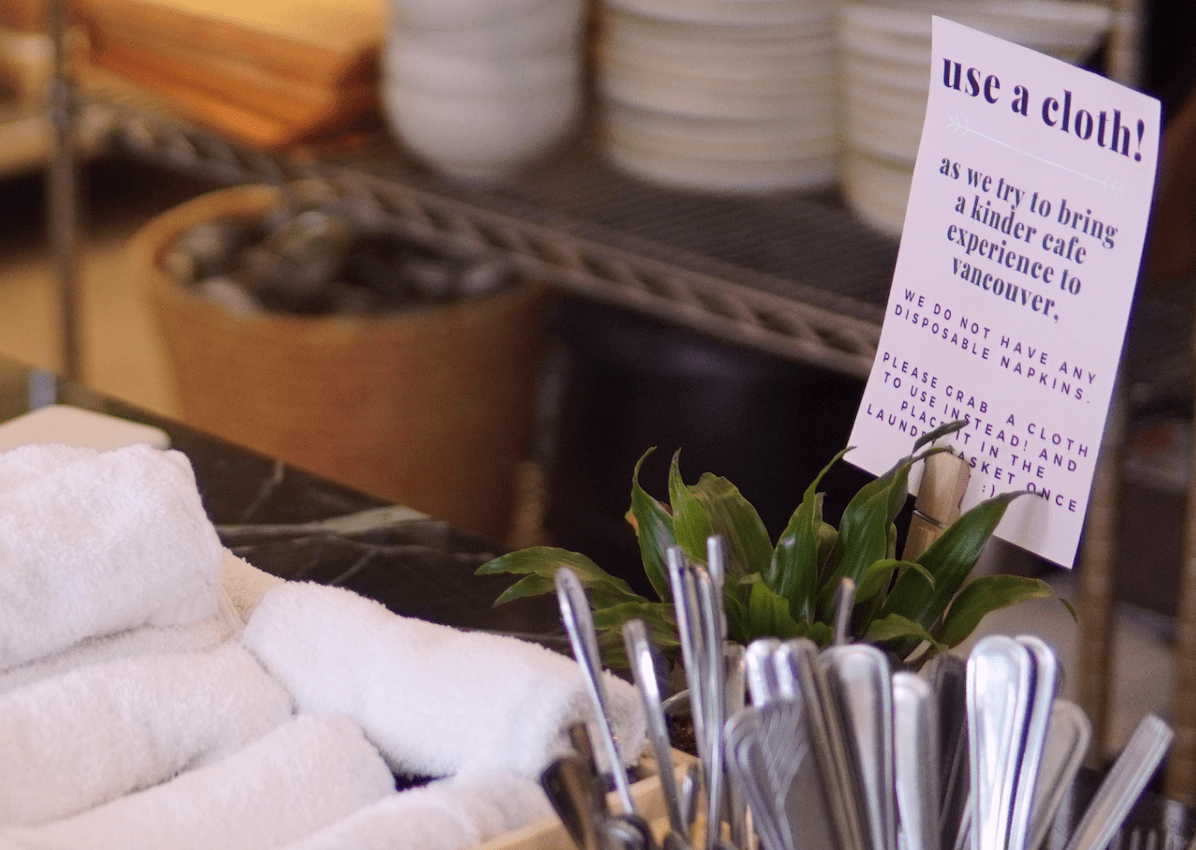
Understanding the audience
In order to uncover more about the cafe's audience and their concerns, we conducted user research through several observations, interviews, surveys, and workshops. These led us to discover key frustrations within Kind Cafe's audience: (1) that customers lack a proper understanding of what it means to be zero waste, (2) they tend to find the cafe’s BYOC policy to be inconvenient, (3) they don’t know how to begin practicing zero-waste on their own, and (4) have a hard time understanding the cafe’s plant-based menu unless they are already vegan.
Our research found that around 70% of Kind Cafe's customers are university students in attendance at nearby schools like the University of British Columbia (UBC), Emily Carr University and Langara College, and have more unique needs because of their occupation. Therefore we focused on the 'Student Take-Out Customer' as our persona.

We then mapped out the journey of the cafe's take-out customers to understand where our audience's frustrations take place and where we might intervene.

Exploring Opportunities
After determining customer needs and identifying intervention areas, we began to ideate solutions. Based on what we understood from our insights, we framed our design focus as "How might we provide the means for environmentally conscious university students to practice reusing materials multiple times, and refusing disposable items in their daily lives?" This launched us into a few days of design sprints, in which we used more HMWs, mapping and Crazy 8's to brainstorm potential solutions.
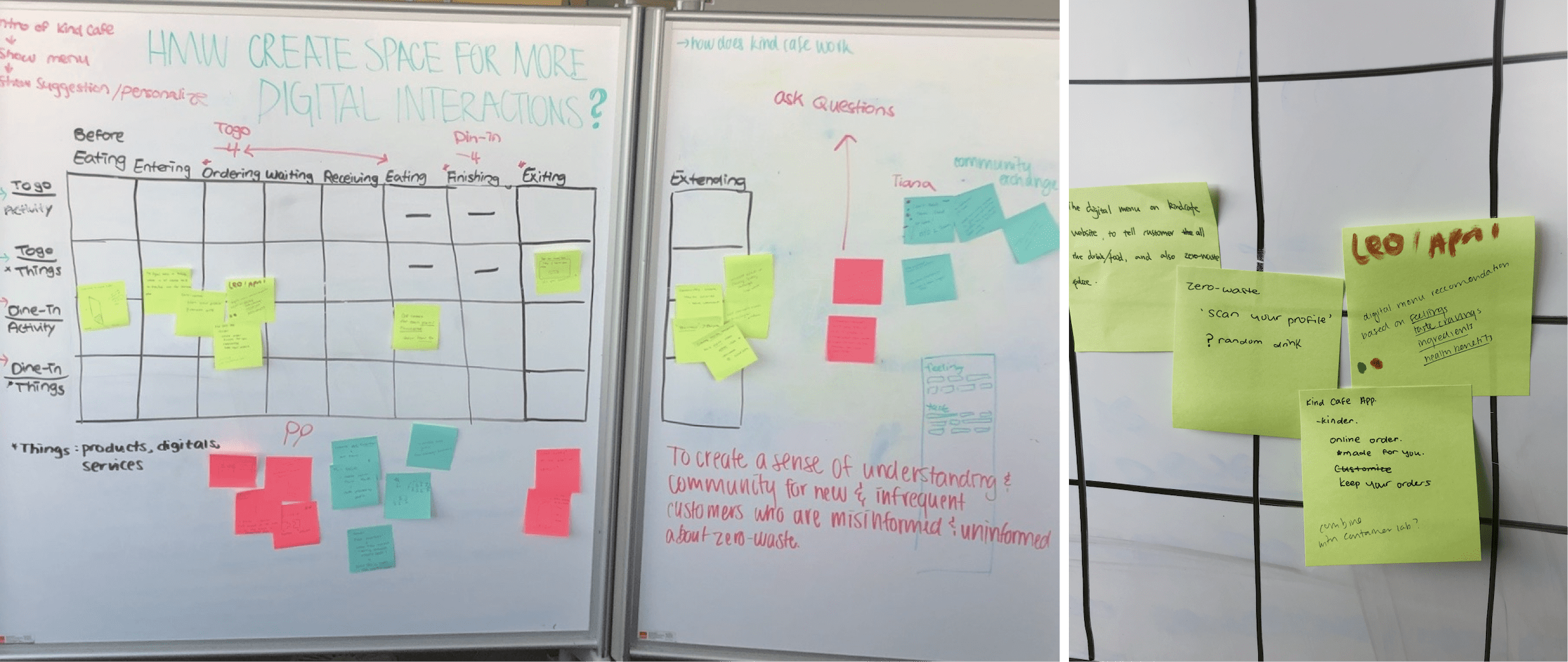
Solution
Kindbox is a meal program that allows student customers to practice zero-waste and develop sustainable eating habits, while also providing them with the healthy food they often lack. Kindbox also allows customers to save time, as meals are offered to students at discounted prices, ordered in advance, and prepared for in-store pick-up.
It has two parts; a mobile app that allows students to view Kind Cafe's menu and order ahead, and the lunch box, which is the physical element to help them actively practice zero-waste.
ONBOARDING
Upon opening the app, users are given a short walkthrough of the entire meal plan program.
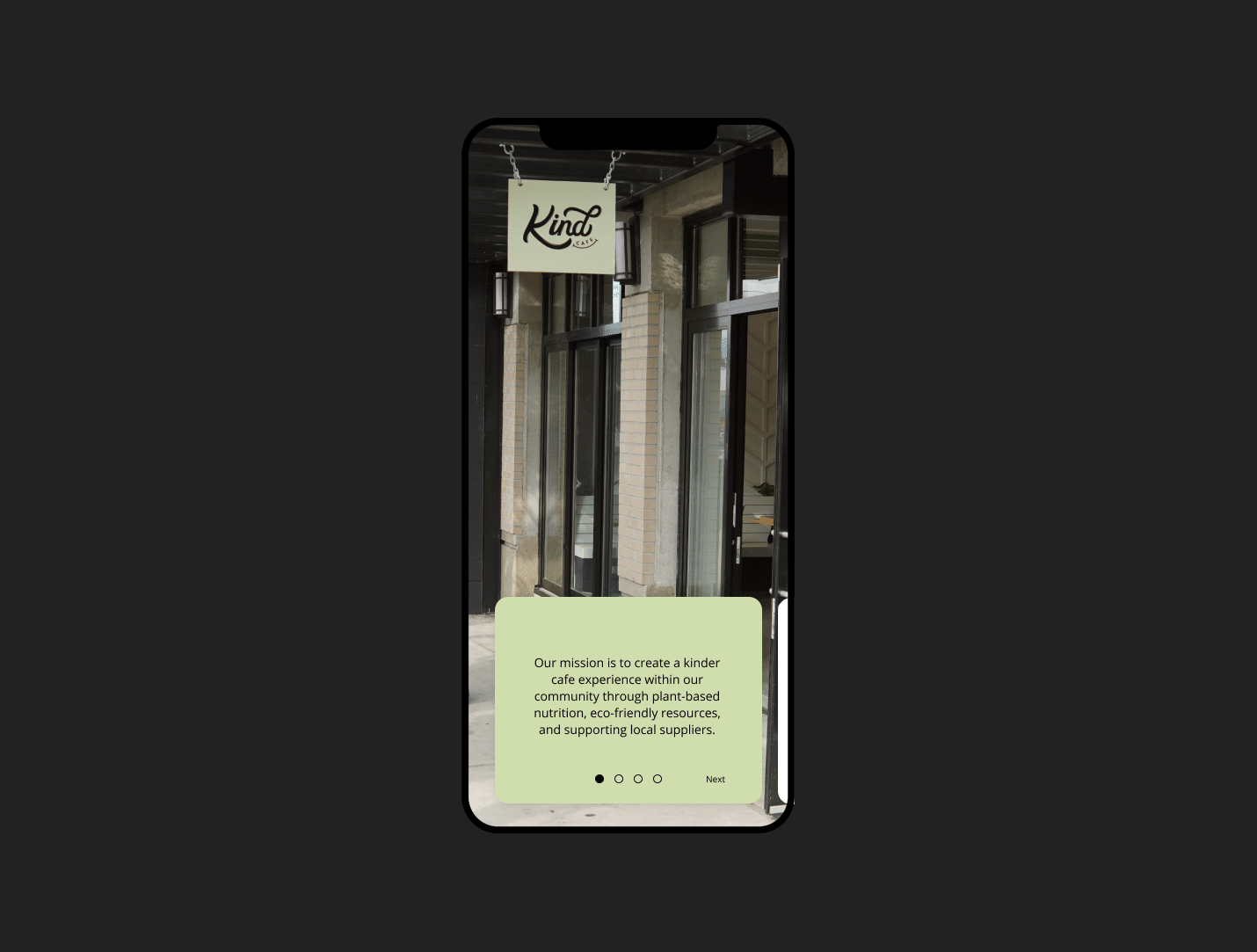
LOGGING IN
There are three login/sign-up options for entering the application. One for returning customers, the second for students to use a school email address for an exclusive 10% off, and the last for non-student new customers.
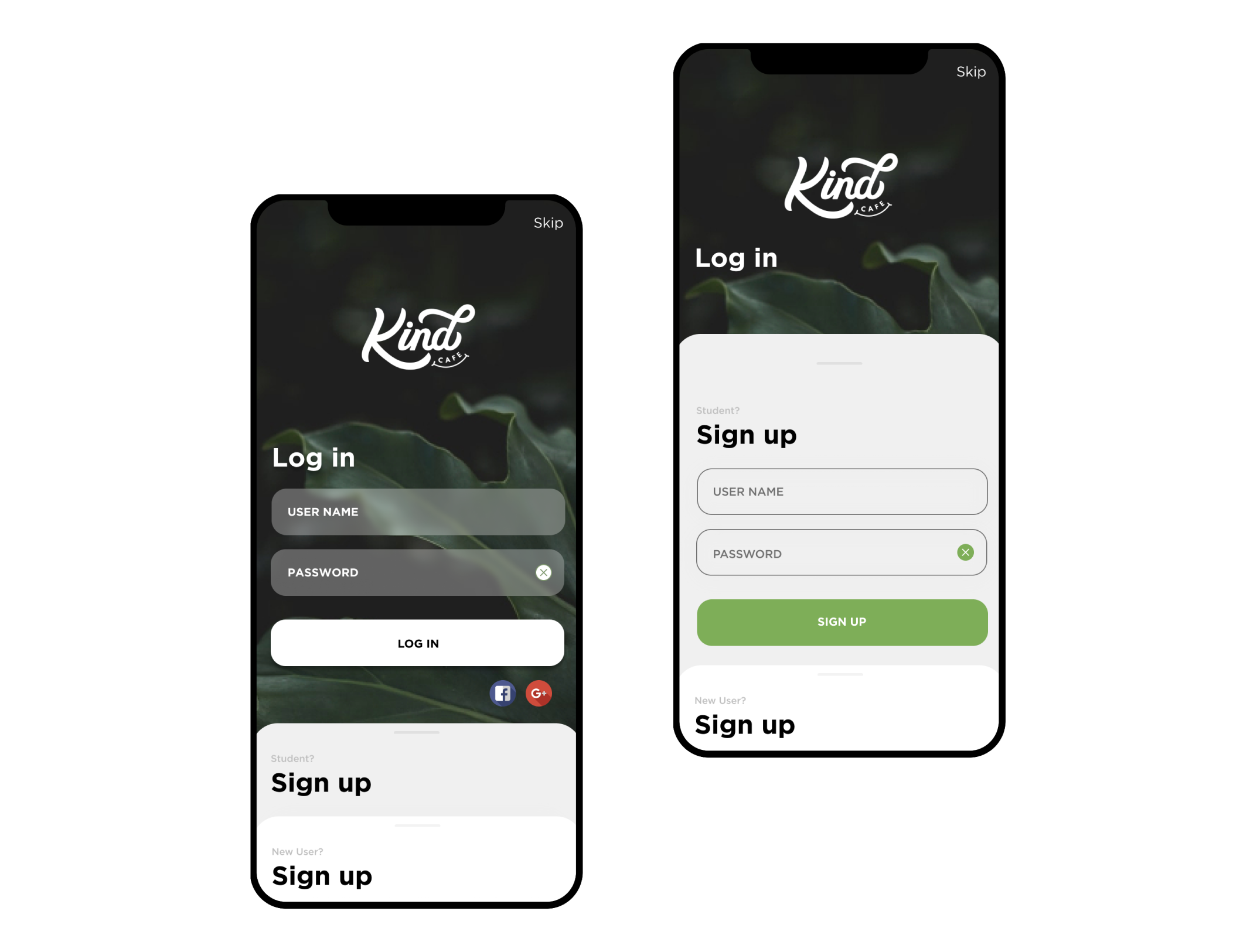
ORDERING
Within the product details, information about Kind Cafe's plant-based ingredients can be found. Customers order in advance by choosing their preferred date and time to pick up their meal. A one-time deposit is added to their first order to cover the cost of materials included in the program.
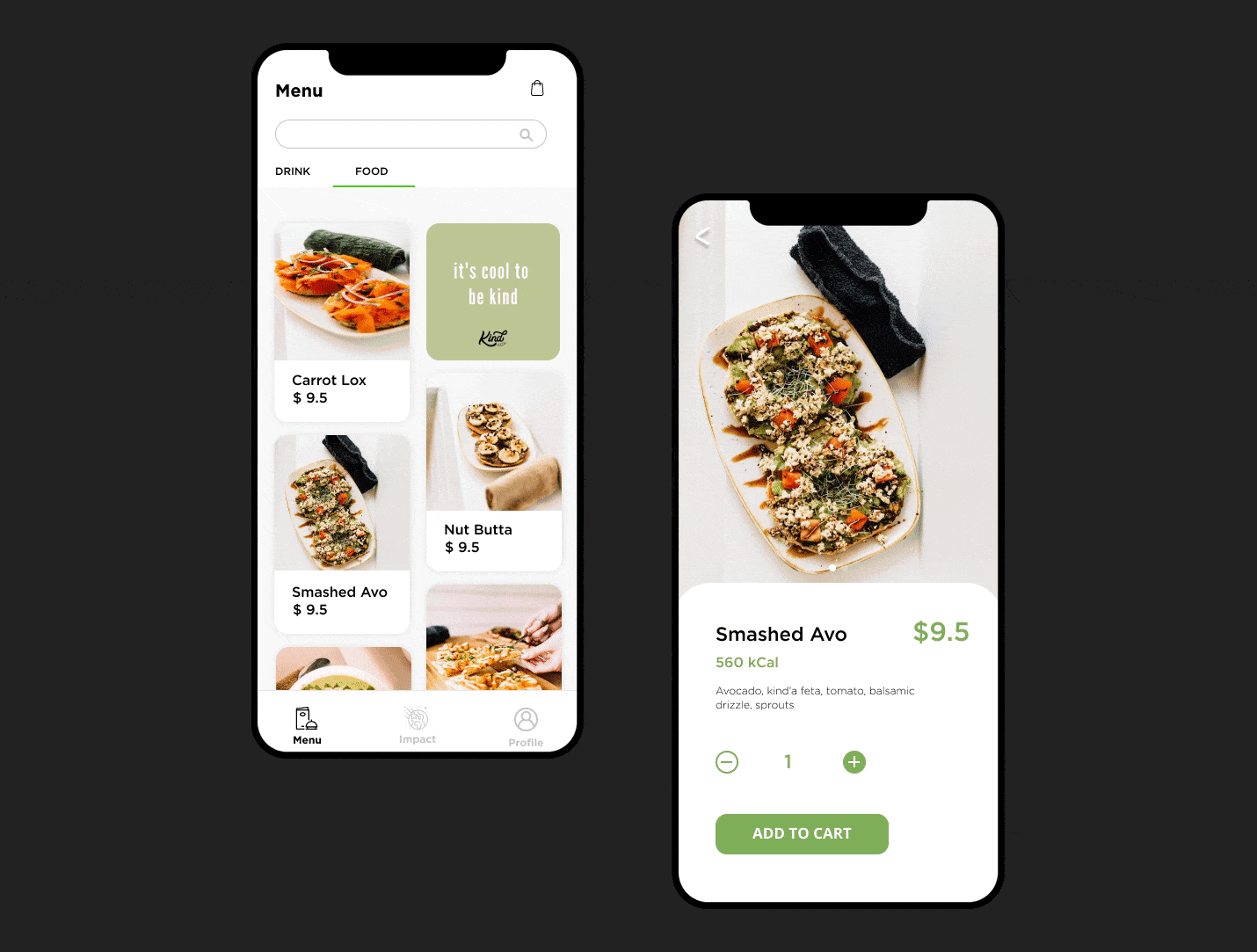
Once the order is placed, customers can see the progress of their meal, such as when it is prepared so they know their food or drink items are fresh.
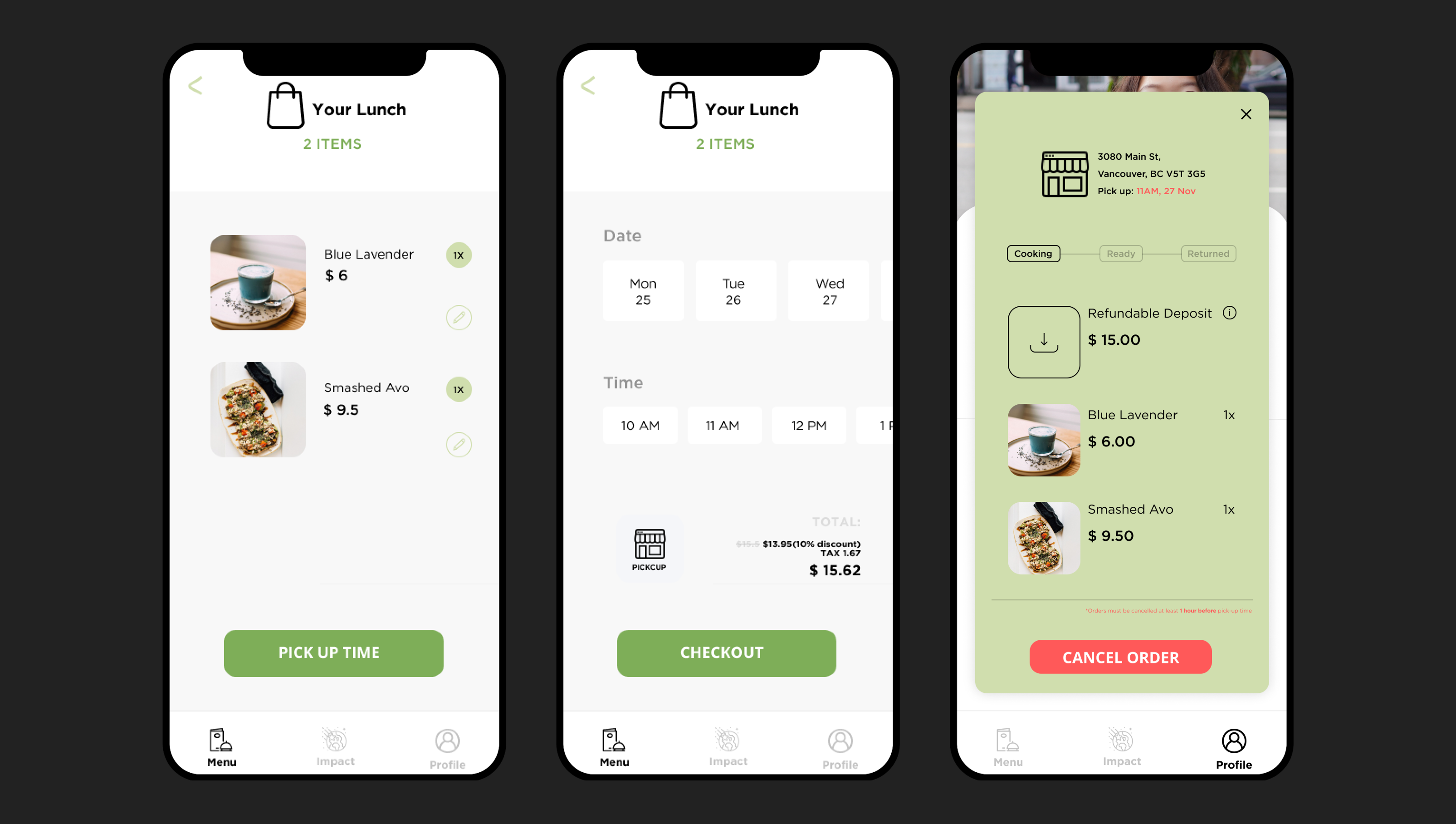
PROFILE
After purchasing their meal, customers are taken to the impact page of the app, where they can see statistics on how their participation in the program is making a difference in the environment (landfills in specific).

PICKING UP
Designed for travel, the Kindbox Kit is made for hands-on practice of zero-waste methods and includes easy challenges to help customers get more familiar with them.
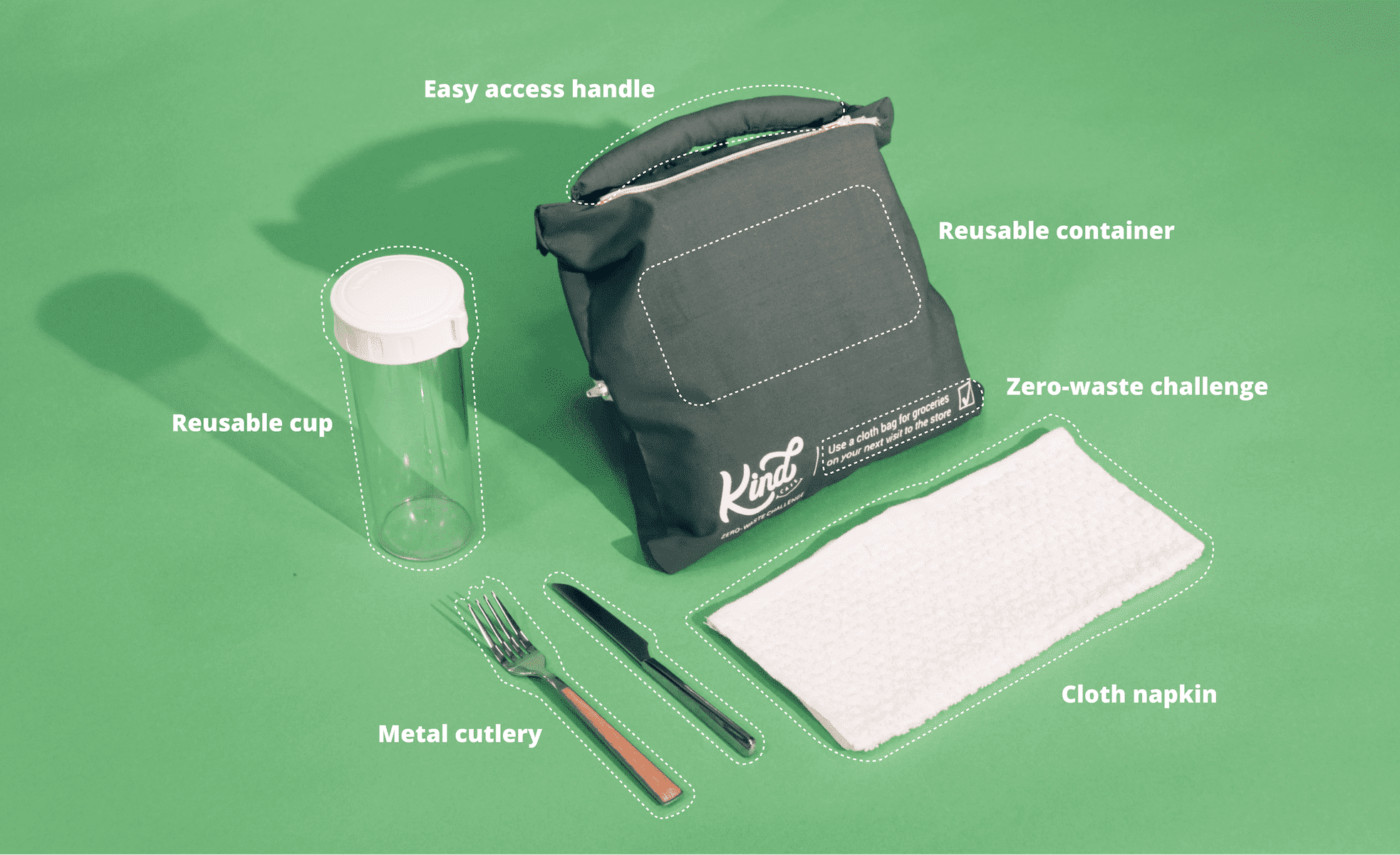
My Role
My primary responsibilites during this project included conducting primary research, some project managment by leading our design sprints, and ux design through copywriting and content design.
Reflection
In hindsight, I see a lot of potential for Kindbox to be integrated into Kind Cafe's existing online presence, rather than as a new application. However with students already being avid users of similar concepts such as UberEats or DoorDash, this solution is still promising. At the end of this project, we talked with Samantha Emerman, the owner of Kind Cafe, to present to her our final solution. In that meeting she mentioned that she had been looking into working with online delivery apps but was struggling to find a sustainable way to do it, and that and Kindbox seemed like a brilliant approach.